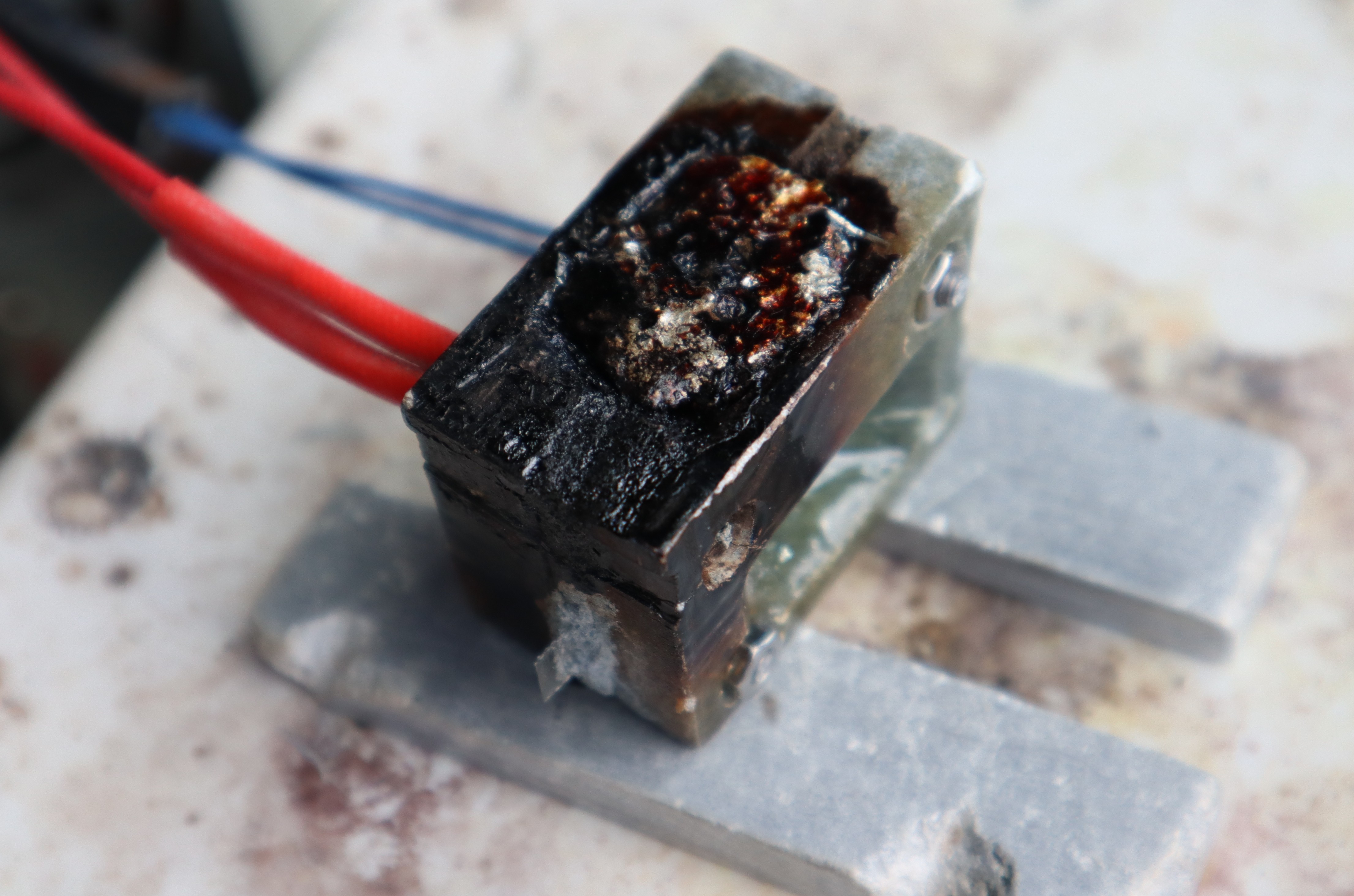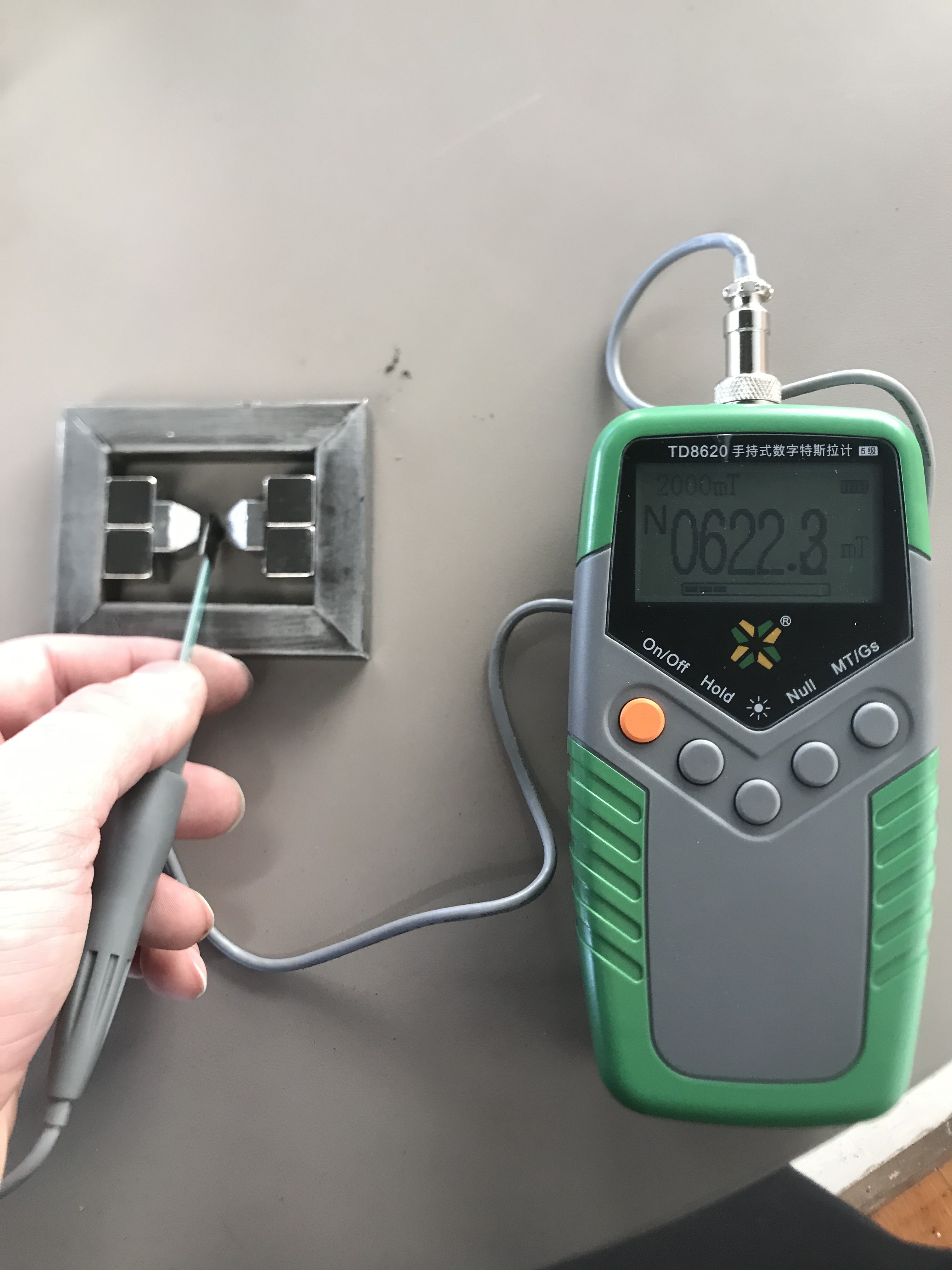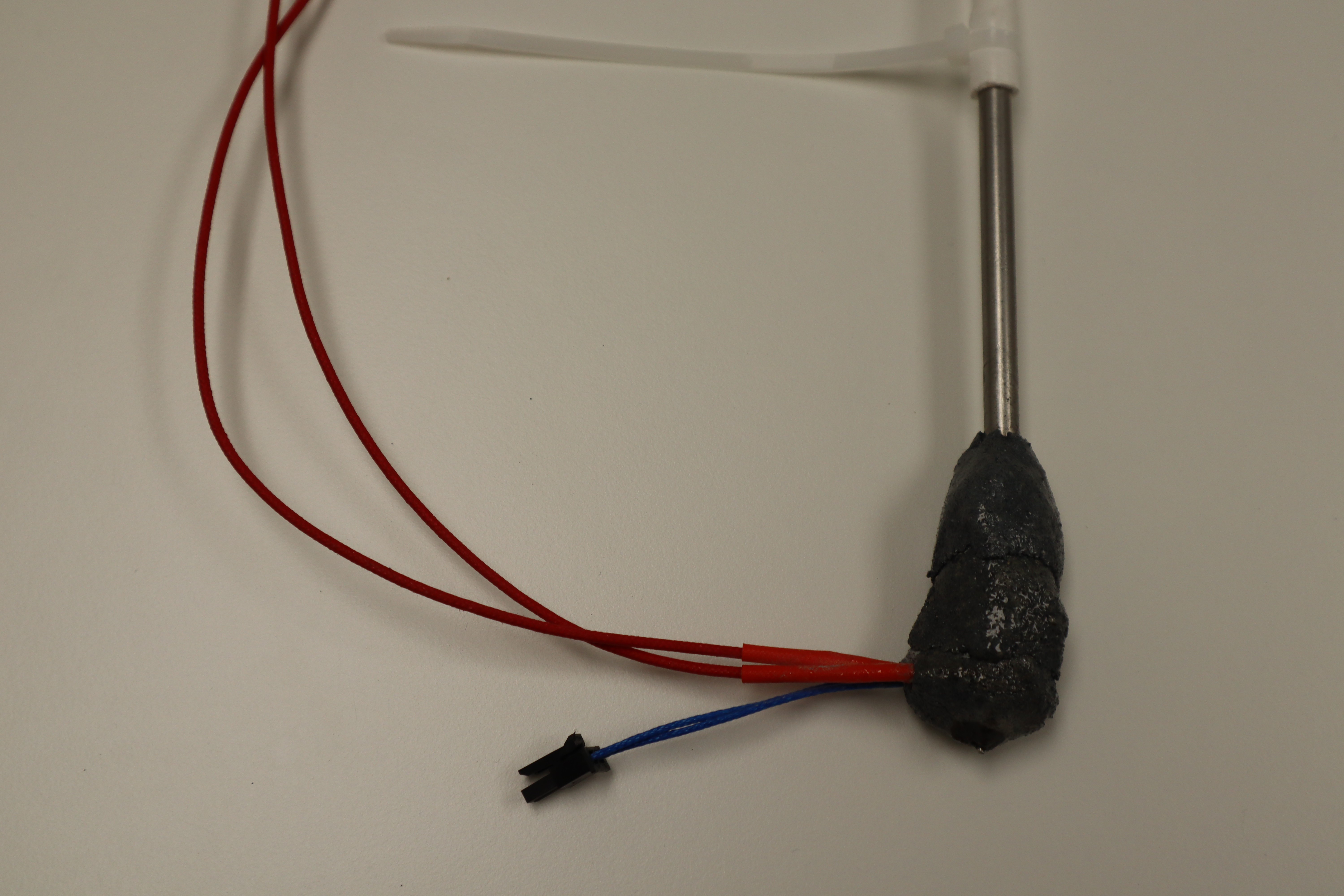Hi everyone! Here's how things have been going since the last project update:

Firstly, I finished up the cold end of the extruder for attaching the MHD extrusion system to a bondtech extrusion system and my old Prusa Mendel printer, for prototyping purposes. (little did I know this effort would prove useless) Then I got back to testing my MHD extrusion system:

In the previous update, I had this extruder built as well, but there was a problem: the capillary force/surface tension of the liquid metal was just too high to be overcome by the MHD forces plus gravity. Even if it were enough, liquid metals are so thin that if it overcame the capillary forces, metal would shoot out of the tip very fast. This would require some very involved control electronics to stabilize, pushing the price well outside the range I was hoping for. I did a few tests with different magnetic yoke configurations and was able to get steady-state fields as high as 1.15 Tesla, but ultimately the chip shortage going on right now was the straw that broke the camel's back for this design, and I had to rethink things. The controls problem was workable if I could boost the field or the current enough, but if the control electronics were going to be prohibitively expensive or outright unavailable, it would defeat the purpose of making highly available metal printing at a cost makers can actually afford.


Here were some of the other test configurations to see how much magnetic field I could get out of the yoke. Perhaps having small volumes of high magnetic field will help someone else down the line, but I ultimately couldn't enhance the field enough for MHD to make sense for metal extrusion. I could have made up the difference than upping the current on the driving circuitry, but it was already going to be way too expensive, if available at all, due to the chip shortage. These digital tesla meters from China are pretty good by the way.

Since I couldn't get enough extrusion force with MHD, I threw together a new "nozzle" out of Cotronics Silicon carbide ceramic, plus high temperature epoxy for added tensile strength, in order to test pressure-based extrusion. With a stainless steel tube as a standoff for the tubing, I attached it to an air tank, pressure regulator, and foot pedal switch to open and close the pressure source. With this I was able to slowly increase the pressure to directly measure how much more pressure I needed, compared to how much the MHD system produced. The ceramic/epoxy held up surprisingly well to the pressure, without any leaks during testing at temperature. The secret was epoxying the stainless steel tube at the top: this allowed the different thermal expansion coefficients to just stress the high temperature epoxy, which had enough elasticity to it, and not the silicon carbide cemented ceramic. The extrusion pressure was about 4 times higher than what the MHD system could produce, which was in agreement with my calculations. Once capillary forces were overcome though, extrusion was not very controllable. I was able to stack material moving the thing around by hand as with a hot glue gun, but this print wasn't going to win any prizes.

Even so, this was a key step forward relative to my previous work at Voxel8: we were able to make nice first-layer traces and bridge wires for long distances, but we couldn't build subsequent layers on top of previous layers because not enough pressure could be built up to keep the liquid flowing.

Extruding wire to demonstrate bridging capabilities with the the old system at Voxel8 in 2016. The capillary properties help extrusion stability in this case instead of acting against it, making extrusion control easier.

The same thing was true for producing traces with the Voxel8 machine: the substrate was stable enough; even printed substrate performed decently. It was perfect for printing electronic traces to replace the silver ink we were using previously, but producing solid metal objects proved challenging, because while capillary forces would normally pull the material onto the substrate, instabilities added up when there was insufficient extrusion force while applying subsequent layers. This was in part because each layer melted into the previous, providing unstable boundary conditions for the capillary flow onto the substrate. If we had sped things up significantly, maybe it would have been possible to deposit each layer without fully melting the layer below, but then we would have required even more extrusion pressure, which was still a challenge with such a thin fluid. If I try pressure-based extrusion again I'll attempt it with a scroll compressor directly on the liquid metal instead: that might just engage the liquid metal enough to reach higher pressures in a controllable way.
Then again, with such a thin fluid, regardless of whether I use pneumatic pressure or MHD, operating in the pressure domain with such a thin fluid would require a very solid controls solution, both on the electronics side and on the software side. I found that again, that would put these extruder systems outside the price range I'm aiming for, if the aim is metal printing for makers. And that's not even considering the issues pneumatic systems have when interfacing with hot things like molten metal: gasses like to expand under those circumstances, causing steady dripping. Therefore, knowing the extrusion force I needed to be able to hit, I began looking for a viable volumetric extrusion method, as opposed to a pressure-based method.
Printing from above the liquidus temperature of the alloy prevents nozzle clogging by granular jamming, which ultimately stumped Lawrence Livermore and Desktop Metal. But then your problem is that the liquid metal is just too thin. Plastics form their own gasket/plunger as they go through their glass transition, and as they are pushed through a hotend. This is why filament extrusion works with plastics. If you try this same thing with metals, the molten metal will squeeze up around the sides of the filament until it gets high enough to re-solidify, clogging the hotend that way, or at the very least leaking out of every available hole. For the longest time I was stuck, so I took a break to hike Mt. Ranier, and suddenly up around 9000 feet I realized what I could do to restore thermoplastic-like behavior, using what I now new about capillary pressure.

The solution I came up with was drastically simpler than the previous designs, and finally hits the price point I was aiming for. I'll go into more detail about how this new system can be used to extrude volumetrically despite the fluid properties of molten metal in my next post, coming this weekend. I'll be testing this design shortly to see if it will work.
 Michael Perrone
Michael Perrone
Discussions
Become a Hackaday.io Member
Create an account to leave a comment. Already have an account? Log In.